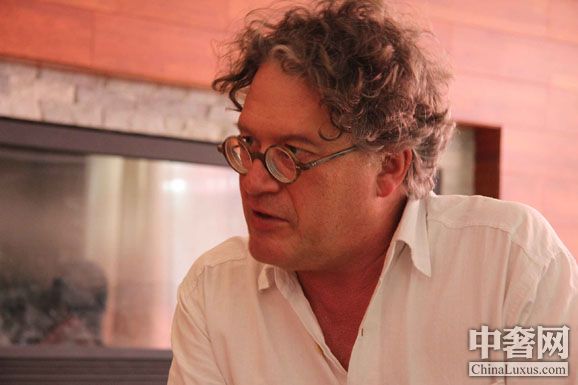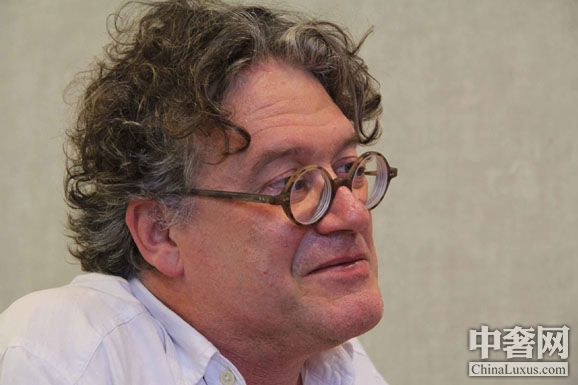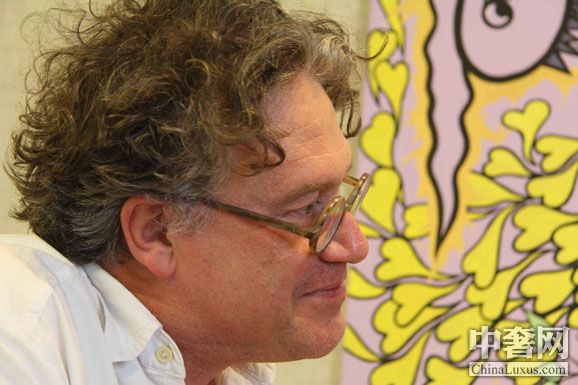|

Jonathan Watkins, Curator of Theme Exhibition of the 4th Guangzhou
Triennial
Jonathan has a profound
comprehension of art, and he does not "admire" art. He prefers
enjoying wonderful life. He says that art is only part of life, and life is not
all about art.
As a professional
curator, what Jonathan cares about most is not the show-off of local science and
technology or the prevalence of public art, he cares more about whether or not
the exhibition is synchronous with local surroundings; whether or not spectators
there can appreciate the beauty of the exhibition. Jonathan has his own
understanding of the notion of art. He thinks art itself has no definite forms,
and art becomes art because spectators attach their own imaginations to the
works.
Jonathan likes to tackle
issues in two sides. In his mind, there is no direct connection between art and
beauty; popular culture is no inferior to “high art”, instead, he thinks the
former is more persuasive than the latter. He is very interested in eastern art
especially Chinese culture, and thinks Chinese traditional ink painting is very
cool.

About
Guangzhou Triennial
ChinaLuxus: You have
organized or co-organized with others many biennials or
triennials, would you please brief us on the major biennials and triennials in
the world? What is the status of Guangzhou Triennial among
them?
Jonathan: It's true, I
have been curators for other biennials and triennials, and they include the
Shanghai Biennial, the Tate Triennial in London, the Palestinian Biennial and
also the Sharjah Biennial. I would say the biggest exhibitions in big cities are
not necessarily the most important; I can make an exhibition in the less
developed countries and feel it's interesting as anywhere else. In the case of
the Palestinian Biennial, it's so important to me given the context of politics.
I don't need the situation to be too sophisticated, or the latest technical
equipment, or developed education programs, it is very much on how "right" it is
for the circumstances. For Guangzhou, it is difficult for me to say anything yet because the exhibition
is just open, with little audience response. I am
looking forward to finding it out.
Chinaluxus: This the
fourth Guangzhou Triennial, and this time it is divided into three
sub-exhibitions, inauguration exhibition, project exhibition, and theme
exhibition, how do you think of this pattern?
Jonathan: It is also
difficult for me to make a judgment
here because I didn't see the
previous exhibitions, but why we shouldn't? Programs can be more interesting
than one-stops. There is of course a practical problem, that is to say, it will
be difficult for international audiences to follow, but when I make an
exhibition here, it is something local people will be interested in. It could
work, so why not try it?
Chinaluxus: As one of
the major curators, what is your understanding of the theme "to see the
unseen"?
Jonathan: I think what
makes an object or a gesture artistic is not something real, it is something we
imagine to project onto what is defined as artwork. Art itself has no fixed
pattern as a matter of fact.
Chinaluxus: What's your
consideration by choosing the Opera House and Grandview Square as the other two
exhibition venues?
Jonathan: Well, It is
interesting to work outside the museum, so we seized the opportunity to make use
of these places. We were thinking how to relate them to the exhibition theme.
For example, the Opera House features sound art, which is "unseen", so we put
those works related with sound here. While in the Grandview Shopping Mall,
together with passengersand commodities, spectators will get a
unique artistic experience.
High Art and Popular
Culture

Jonathan thinks popular
culture is not inferior to high art
Chinaluxus: According to
my understanding, holding the exhibition in Grandview Square means to shorten
the distance between the public and the art, so what is the difference between
the so-called "high art" and popular culture?
Jonathan: It is a
difference I observe rather than a difference I feel myself. To me, popular
culture is more persuasive than high art. I don't think popular culture is
necessarily less beautiful, less profound than high art, so I am very democratic
in the understanding of art. Only that popular culture can be accessed more
easily. From my point of view, some fine art or high art is very bad, but some
popular culture is very good.
Chinaluxus: This is an
era of contemporary art, and this exhibition consists mainly of contemporary
artworks. But from the point of
view of aesthetics or visual effects,contemporary artworks seem to be not so prestigious.
What is your understanding here?
Jonathan: Through the
20th century, it came to be understood that
art and beauty were no longer equivalent. For example, although it is only a
urinal, Marcel Duchamp's artwork "Fountain" is a piece of art. So art is not
necessarily beautiful, and beautiful things are not necessarily
artworks.
Chinaluxus: Different
from western practice, traditional ink painting in the east exertsemphasis on the
expression of artistic conception. What's your view upon China's traditional ink
paintings?
Jonathan: I think they
can be fantastic, they have great potential for beautiful experience or profound
experience, and they shouldn't be
dismissed as not cool.
Chinaluxus: Cultural
differences result in different art forms, so in your opinion, is art defined by
the way it is appreciated or the way it is
created?
Jonathan: It is
absolutely up to the observers. If the observer does not think it is an artistic
experience, then the art does not work. If it is not understood as art, it is
not art.
Eastern culture leads me
to China

Jonathan likes Chinese
culture very much
Chinaluxus: How do you
feel about coming to Guangzhou?
Jonathan: I don't know
enough about it, that's what I think. I get information, understand the
triennial's important situation, and there is strong interest in art here. I
haven't had enough time to spend looking around. I hope there will be a guide to
show me around in Guangzhou. People here are nice, and they look
beautiful.
Chinaluxus: Since you
don't know much about Guangzhou, then what attracts you here to organize the
triennial?
Jonathan: I am
fascinated by China, in general. I would say probably, of all the
curators working in London, I am one of the most experienced with China. I want to develop my
understanding of China's cultural life, through my activity here. I think I will
know more about Guangzhou by the time I finish the work. I want very much to
have a chance to work, and communicate within Chinese cultural context. I feel
like I am just a scratch on the surface, I am very interested in eastern
culture, very interested in what art means
here.
Chinaluxus: Now that
you're so interested in eastern art and Chinese culture, do you have any plans
to invite Chinese artists to attend your future
exhibitions?
Jonathan: Yes, of
course. I have been working with Chinese artists for many years. I have and I
will keep on doing it. With experiences I get in Guangzhou, the future
cooperation will be more meaningful.
Chinaluxus: As a
curator, you have to be familiar with quite a lot of art
areas, and then do you have any hobbies related with art? If not, what is your
favorite activity after work?
Jonathan: Very
thoughtful question. I am as equally interested in non-art areas as I am in art.
In fact, very often I prefer to walk in a landscape rather than to look at a
painting. Life itself is wonderful; you needn't admire art, which is only part
of the life.
Chinaluxus: It is an
honor to have the chance to talk to you. Thanks a lot for your generosity to
share with us your views.
(Mainly
according to the Chinese version of the interview) | 
